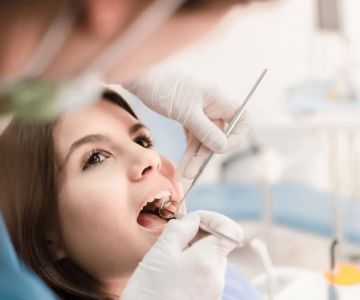How to Correctly Check Oral Temperature: A Step-by-Step Guide
Taking an oral temperature is one of the most common ways to check for fever or monitor a person's health. Whether you're caring for a child or an adult, knowing how to properly check oral temperature is essential for obtaining accurate results. Using an oral thermometer might seem straightforward, but there are specific steps to follow to ensure you're getting the correct reading. In this guide, we will walk you through the process of checking oral temperature and provide useful tips for getting the most reliable results.
1. Understanding Oral Temperature Measurement
Oral temperature refers to the measurement of the body temperature taken through the mouth. It is one of the easiest and most commonly used methods for temperature measurement. Oral temperature readings typically fall within the range of 97°F to 99°F (36.1°C to 37.2°C) for a normal, healthy person. Temperatures above this range may indicate fever or an underlying health issue.
It is important to use a digital thermometer designed for oral temperature measurement. These thermometers provide quick and accurate readings and are typically more reliable than mercury thermometers, which are no longer recommended due to safety concerns. Digital thermometers are easy to use, sanitize, and give clear readings within a few seconds to a minute.
2. How to Use an Oral Thermometer Correctly
To ensure accurate temperature readings, it's essential to follow the correct procedure when using an oral thermometer. Below are the steps you should follow:
2.1 Preparing the Thermometer
Before using the oral thermometer, make sure it's clean. Wipe it with a clean cloth or disinfect it using alcohol wipes. This will help ensure that bacteria or dirt doesn't interfere with the reading or cause infection. If you're using a new thermometer, check the instructions to ensure you understand how it works.
2.2 Positioning the Thermometer
Place the thermometer under the tongue, toward the back of the mouth, and keep the mouth closed. Ensure that the thermometer is placed securely under the tongue, as this will provide the most accurate temperature reading. The thermometer should stay in place for the duration specified by the manufacturer, usually between 30 seconds to 1 minute.
2.3 Keeping the Mouth Closed
It is important that the person being tested keeps their mouth closed while the thermometer is in place. Breathing through the mouth or talking can alter the accuracy of the temperature reading. If the person is unable to keep their mouth closed, the thermometer may not register the correct temperature.
2.4 Waiting for the Reading
Once the thermometer is in place, wait for the device to signal that the reading is complete. Most digital thermometers will beep when they have finished measuring the temperature. Remove the thermometer and read the temperature displayed on the screen.
3. Common Mistakes When Taking Oral Temperature
While checking oral temperature is a simple process, there are a few common mistakes people make that can lead to inaccurate results. Understanding these mistakes can help you avoid them and ensure that you're getting the right information about your health or the health of someone you're caring for.
3.1 Eating or Drinking Before Measurement
One of the most common mistakes when taking an oral temperature is measuring immediately after eating or drinking. Hot beverages like coffee, tea, or even cold drinks can temporarily raise or lower the temperature of the mouth, skewing the reading. To get an accurate oral temperature, wait at least 15 to 30 minutes after eating or drinking before taking the measurement.
3.2 Not Keeping the Mouth Closed
If the person being tested doesn't keep their mouth closed around the thermometer, it may affect the reading. Air exposure, breathing, or talking during the measurement can result in a lower or higher temperature than the actual body temperature. Ensure that the mouth remains closed during the entire process.
3.3 Using an Old or Faulty Thermometer
Over time, digital thermometers can become less accurate, especially if they are not properly cared for or have expired. Make sure to replace any old or malfunctioning thermometers to ensure accurate readings. Check for any visible signs of damage or malfunction before using a thermometer, and regularly calibrate it according to the manufacturer's instructions.
4. When Not to Use Oral Temperature Measurement
While oral temperature measurement is a useful tool in many cases, there are instances when it may not be the best choice. Here are some situations where oral temperature measurement should be avoided:
4.1 Infants and Young Children
For infants or very young children who cannot hold a thermometer in their mouth, other temperature measurement methods should be used, such as rectal thermometers or temporal artery thermometers. Oral measurement may not be accurate for children under 4 years of age, as they may not understand how to keep the thermometer in place properly.
4.2 Mouth Injuries
If the person whose temperature is being taken has an injury in their mouth, such as a sore or mouth infection, it's best to avoid using an oral thermometer. In these cases, other temperature measurement methods, like ear or forehead thermometers, might be more suitable.
4.3 Severe Illness or Excessive Sweating
If the person is severely ill, sweating heavily, or experiencing difficulty breathing, it might be better to use a different method of temperature measurement. In these cases, taking oral temperature may not yield an accurate result, and a doctor should be consulted for more appropriate methods of monitoring the person's condition.
5. How to Interpret the Results
Once you've taken the oral temperature, it's important to understand the results. Generally, a normal oral temperature for a healthy adult falls between 97°F and 99°F (36.1°C to 37.2°C). If the temperature is above this range, it may indicate fever or illness. A fever is typically considered a temperature above 100.4°F (38°C), but this can vary depending on the individual and the circumstances.
If the oral temperature reading is higher than normal, monitor the person for any additional symptoms, such as chills, sweating, or fatigue. If the temperature is consistently elevated, it is important to seek medical advice. For any concerns about a fever or abnormal temperature readings, always consult a healthcare professional for guidance and further evaluation.
For more information on health and wellness, including temperature management tips, visit Dentistry Toothtruth for expert recommendations and personalized services.






 Westgate Dental Arts
Westgate Dental Arts Coventry Family Dental
Coventry Family Dental Familia Dental
Familia Dental Dr. Daniel S. Fife, DDS
Dr. Daniel S. Fife, DDS Dentistry At Suburban Square: Michael I. Wollock, DMD
Dentistry At Suburban Square: Michael I. Wollock, DMD Comfort Care Dental
Comfort Care Dental The Importance of Oral Health Education During Pregnancy for a Healthy Pregnancy
The Importance of Oral Health Education During Pregnancy for a Healthy Pregnancy Why Skipping Dental Checkups Can Lead to Bigger Oral Health Problems
Why Skipping Dental Checkups Can Lead to Bigger Oral Health Problems Best Tips for Brushing Your Teeth Properly for Healthy Gums: Essential Techniques for Oral Health
Best Tips for Brushing Your Teeth Properly for Healthy Gums: Essential Techniques for Oral Health Advantages of Porcelain Dental Restorations
Advantages of Porcelain Dental Restorations How Can Diabetes Cause Tooth and Gum Problems? Preventing and Managing Oral Health Issues
How Can Diabetes Cause Tooth and Gum Problems? Preventing and Managing Oral Health Issues Healthy Habits for Promoting Good Oral Health and Hygiene: Tips for a Healthy Smile
Healthy Habits for Promoting Good Oral Health and Hygiene: Tips for a Healthy Smile